Photography clearly has a relationship to memory and identity, but I personally am not sure it’s quite as simple as it’s usually made out to be. Maybe this all comes down not so much to what photography is, but rather how we use it. Then again, those engaged in this particular nexus might just know more than I do. I had followed Dragana Jurisic‘s work for a while, and I had also wanted to have a conversation with her for some time. After I decided to continue my somewhat dormant series of conversations again, Dragana was high up on my list of photographers, and much to my delight, she agreed to speak with me. The following conversation was conducted via email.
Jörg Colberg: You were born in a country that doesn’t exist any longer, and you now live in a completely different location. Given this has relevance for your work, can you speak a bit about you biography and evolution as a photographer? Why photography, for example, and not, say, writing?
Dragana Jurisic: Photography came into my life in early childhood when my father, an ardent amateur photographer, showed me how to operate a camera and work in the darkroom. However, I did not take photography seriously until the first day of war in my hometown Slavonski Brod, when our family apartment got burned down, together with thousands of his prints and negatives, and all of our family albums. Suddenly from being photographed every day of my life, I became one of those refugees with no photographs and no past. It seriously affected my memory, that I almost have none before that Sunday in September 1991. My father stopped taking photographs due to this event. I started. It was a way to survive, to try and make some sense out of the chaos of war, it also provided me with a semblance of control. I felt with a camera I had a voice and I became an active agent in my own destiny.
A BA in photography was not possible in Croatia in the 1990s, so I went on to study psychology and later worked in this field until 2008. But after growing increasingly restless – feeling I was not in a right job – I quit that safety net and dove into the unknown. I began with an MFA in Documentary Photography in Newport, Wales and later went on to complete a PhD in 2013.
Regarding why photography and not writing – I do not consider myself an either/or person, although admittedly, images come to me easier than words. Maybe growing up on comics, the relationship of visual images and words became very familiar to me; in a way it became my language. I like the tension that exists between image and text. It is very exciting when you find the right balance.
JC: Can you talk of that tension between image and text a bit more? In what way is there a tension, and how/why is this exciting for you?
DJ: I think the tension is created as a result of the competition between image and text for our attention. What is exciting to me is this matchmaking game of trying to put things together. If you put two items that are too similar in meaning and connotation next to each other, the tension will not be there – the relationship will flat-line and flop. Similarly, if you put two items next to each other that are so widely different that it becomes nonsensical, it will not work either. Still, I do not believe there are clearly defined rules on how this works. You experiment, practice, generate both vocabularies, keep pairing up and playing until the magic occurs.
JC: Also, and I don’t know if this is relevant (or how), but I’m still interested: You live in Ireland. Why Ireland? Do you photograph there as well?
DJ: I like the rain, open spaces and sea air. The fact that it’s a small island surrounded by the ocean appeals to me. I like that no one honks their horn unless there’s a real danger, that the police do not carry guns and that people like to have fun. I also think that subconsciously I was trying to find a place in Europe least likely to experience warfare in the future. Once in a lifetime is enough.
I do photograph here continuously, but Ireland for me is a place where the real work is done, the one of editing.
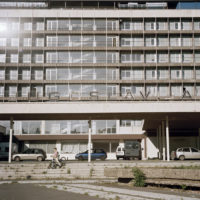



JC: There’s YU: The Lost Country, tying in with your biography – and more. Can you speak about its genesis? There is a connection to writer Rebecca West?
DJ: I came across Rebecca West’s Black Lamb and Grey Falcon (1941) when I moved to Ireland. A friend who was studying International Relations said I should read it. So I did. I read it first in 2000, then over and over again as I was working on YU: The Lost Country. Every time the book provided new revelations. I was amazed at how this foreign woman understood Yugoslavia – a place so complex and perplexing – so well.
What is significant about Black Lamb and Grey Falcon is that Rebecca West never othered Yugoslavia. She felt kinship with Yugoslavs because she was also displaced. Rebecca West was the other herself. She said that she knew Yugoslavia would disappear, and so it did, twice, since the book was published, first in 1941 and then again 50 years later. Rebecca West said that the reason she had written half a million words about Yugoslavia was because she did not want to forget anything about it, and because she wanted to preserve that memory for millions of Yugoslavs, who now live in exile.
So, a decade into my own exile, I decided it was time to try and deal with the conflicting memories and emotions I had about my lost country and to attempt to engage with the meaning of identity. Is identity tied to a nation or a place, or can a person build his or her own metaphysical home, one that can’t so easily be annihilated and taken away? The subject I was attempting to investigate in YU: The Lost Country was incredibly complex: Yugoslavia, exile, national identity and memory. I needed a definite road map, something to adhere to. It would be, otherwise, too easy to get lost in the project. And who better to follow than another displaced person, traveling through the land of the displaced? Rebecca West’s huge tome provided the itinerary down to almost an hour. So, I followed her itinerary ritualistically, starting as she did – on Easter Eve, 75 years later.
JC: Photography is often tried to memory, but just like memories, photographs are just so unreliable. How did you approach photographing a country, your birth country, that doesn’t exist any longer? How does one go about photographing feelings and things that are invisible, such as, let’s say, “home”?
DJ: I love what Brodsky wrote about memory:
Memory betrays everybody, especially those whom we knew best. It is an ally of oblivion, it is an ally of death. It is a fishnet with a very small catch and with the water gone. You can’t use it to reconstruct anyone, even on paper. What’s the matter with all those millions of cells in our brain? What’s the matter with Pasternak’s “Great god of love, great god of details”? On what number of details must one be prepared to settle?
Joseph Brodsky (1985)
Memory, or rather the obliteration of memory is crucial to what happened in former Yugoslavia. A collective amnesia was forcefully imposed by the rulers of the new states born from Yugoslavia’s ashes. Suddenly we had to forget everything that related to our common Yugoslav past. The street names were changed, the shared pop culture – deleted, the national heroes we worshiped as kids suddenly became the enemy of the people, written out of history books. All this happened overnight.
There is a natural enemy to the obliteration of memories, and that is nostalgia. So nostalgia is also outlawed in ‘our’ new countries. The term was coined: ‘Yugo-nostalgia’. The Yugo-nostalgic is seen as a suspicious person, a ‘public enemy’, a person who regrets the collapse of Yugoslavia. A Yugo-nostalgic is the enemy of democracy, a ‘traitor’. So, I said ‘well, screw that!’ and decided to purposely use nostalgia when making my project. I see photography as nostalgia’s secret weapon. Photographs do not only stand in for memories, they also help us recall our past experiences, they serve as proof of identity and as material evidence of the past. Photographs are important in the creation of self-narratives. I believe that the camera, like some kind of a magical device, has the capacity to bear witness to the vanished past.
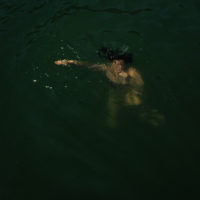
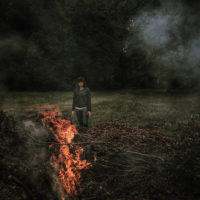

JC: There’s something problematic with nostalgia, though: doesn’t it too often lend itself to the same distortion of the past as the decreed obliteration of memories you spoke of? Don’t we all too often remember just as selectively when we’re nostalgic as when we try to wipe off events from our mental maps?
DJ: As a result of what happened in my former country – living through an upheaval like war and witnessing how history can be rewritten according to who is in power – I stopped believing its validity. Who writes history books and whose account is it anyway?
Memory is highly unreliable. It’s like a low-compression jpeg file – every time you open it, it looses some of the original information. When I say I used nostalgia as a weapon, I mean that I use visual imagery and symbolism that would be familiar (nostalgia provoking) to many who grew up in Yugoslavia, symbolism that has an ability to trigger the traces of the memories that had been repressed.
JC: Related to what you said about memories, you’re the only person who has access to yours. For the rest of us, there are the photographs. I guess what I’m interested in is how you deal with trying to make people see in the photographs what is connected to your memories. Not sure I’m making this so clear, but there seems to be a bit of a leap of faith here (which I know many photographers would be uncomfortable with): people will see what I want them to see. But they might not – and then what?
DJ: This stems out of hope that our minds are, as George Saunders wrote, “built on common architecture – that whatever is present in me might also be present in you.” To create art, we often need to make this leap of faith. We need to believe that our audience will have the necessary tools to decipher the artwork encountered. Symbols encoded into the artwork might provide a key to unlocking an encrypted meaning. Also, in my opinion the work is successful not when I “make people see what I want them to see,” but when they see much more than what was intended. Then it transcends.
JC: If I understand this right (correct me if I’m wrong) your ongoing project My Own Unknown comes in a variety of chapters. Before going into details, what is the general idea behind it? What’s the idea behind the chapters?
DJ: The general idea behind My Own Unknown is an attempt to learn about the immensity of what is unknown in ourselves. What we do not know and what we do not understand seems infinite. And understandably, it makes many people scared to even try to look into these shadowy corners of self. So we accept the identities that were pre-made for us, as it is easier, admittedly, than looking into the unknown and possibly unknowable.
My Own Unknown is a personal quest of discovering who I am, why I am here, what my purpose is, and what it is to be female today. The work is primarily for women and about women. The reason it is done in chapters is that I did not want to take a linear trajectory. I felt it would take too long to get to any kind of an answer. So I decided to look at it from different perspectives. Each chapter represents another point of departure but they are all traveling towards the same destination.
JC: Could you spell this out a little more, the part about the work being “for women and about women”?
DJ: The main protagonists of all the chapters of My Own Unknown are women; my aunt in “She was so beautiful, like she was her own creator” – a woman who desperately wanted to be free, escaped the oppressive system and family (arranged marriage and poverty), only to end up being oppressed again by the same culprits. L’Inconnue de la Seine, a young woman who allegedly drowned herself to escape her own torment, ending up as the face of Resusci Anne – a CPR practice doll – nicknamed ‘the most kissed girl in the world’; and in a wider context a nameless anonymous woman many artists have projected imagined identities onto. And most importantly, a hundred women who have come forward to participate in the 100 Muses chapter, who have all shared their stories of what is to be a woman today.

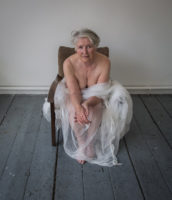
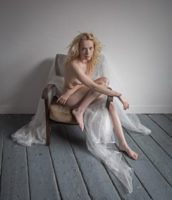

JC: In that chapter, 100 Muses, you photographed 100 nudes. Referencing the male gaze you asked “What are the characteristics of the female gaze?” Do you have an answer now?
DJ: I guess the only answer I can provide here is what the characteristic of my own gaze is. I discovered that my gaze is highly maternal. I feel very protective of everyone who participated in the project. Not in a patronizing way of thinking myself as some great mother figure, but in a way that I feel connected to each and every woman who took part. I want them to feel empowered by the experience. My gender probably has a lot to do with the nature of my gaze. The power relationship between an artist and a muse seems primarily to be one of exploitation. The female muse is often seen as passive. And I did not want this to happen with my project. When the hundred women came forward to be photographed nude, I made sure they became active agents in the process and took their representation into their own hands by claiming ownership over their bodies. This is very important in the Irish context. Here we are in 2017, in a first world country in which women are denied their basic human rights to choose. Once we get pregnant; our lives no longer belong to us but to the State; our reproductive choices are taken away from us. One hundred Muses tries in some small way to readdress these and other power issues.
JC: Can you provide more details about what you did to give your subjects more agency during the shooting?
DJ: At first, it started as an experiment. It was really the first person that volunteered that made me realize there was only one correct way of approaching the project. And that was to give women both directorial and editorial powers. So they decided how to stand, sit and move, and also they chose the final image that would represent them. I did ask one thing, and that was to make direct eye contact with the camera. The reason for that request was that through previous experiments with photographing nudes, I had realized that when there was no direct eye-contact, images and poses would very quickly slide into a well recognizable tropes from the history of the (often submissive) female nude in the Western Art tradition. Women who have participated co-own this project – one of the AP prints goes to the sitter and the other one to me. Also from the edition sales, a significant amount of proceeds is to go towards funding women rights organizations of the country where the work is going to be shown.
Photographers have a responsibility to engage with the ethics of image making. Particularly when the work is about sensitive subjects such as war, poverty, and immigration. When you turn social issues such as this into a spectacle, re-package it as artwork and produce it at a scale so great and at a price so high that only corporations and/or institutions can afford to own it, the problem becomes even more pertinent.
(French: Une conversation avec Dragana Jurisic)
